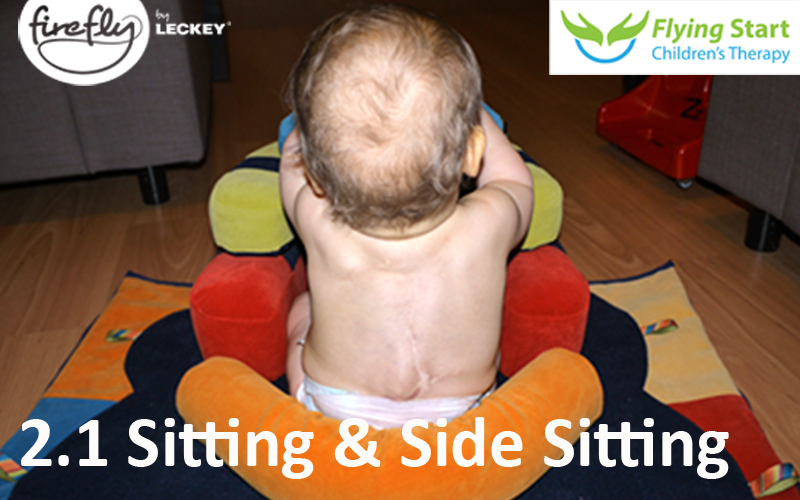Sitting Pretty – Transitioning from the Early Positions:
In this Blog we will be looking at how the Playpak can assist with early sitting and progressing to more advanced sitting activities.
We will discuss the various challenges children face with sitting and then at the end we will discuss a nice technique to help you teach your child how to get themselves from lying to sitting.
You may wish to refer back to my previous blog about lying positions to help your child develop the early postures and movements needed to the progress to the more advanced sitting positions.
Early Sitting
Common difficulties:
Children who have low tone often slouch too much when sitting and take a long time to develop the stability needed in their tummy and back muscles to hold themselves in this position.
Children with high tone often increase their tone when challenged and if not supported adequately will adopt poor postures in an attempt to support themselves. They do not choose to adopt these postures and it is not the most comfortable way for them to sit; it is simply their over-active muscles forcing them into unwanted positions.
With early sitting it’s important to remember that it is a very taxing position; inadequate head control with head flopping forward can make it hard for babies and infants to breathe easily – so work within the limits of your child or with guidance from your therapists.
Solutions:
Playpak can be used in a reclined sitting position.
In this position we can work on reaching hands forward for toys. As baby becomes more able and comfortable in this position we can remove the roll at the base of the horseshoes and sit them with their tummy at the back and the strap over their pelvis to give support.
From a reclined position we can also do baby pull-ups encouraging them to maintain their own head control.
Aim:
We want your child to start to develop their core stability to sit themselves up. At first we are aiming for head control, so reclined sitting is OK as fully upright sitting may be difficult to maintain. For a child to use their hands in sitting, it is essential that the trunk has adequate support, much of which can be given by Playpak with horseshoes, strap and rolls.
At first we want hands coming forward, encouraged by doing the activities discussed in the previous blog. This will help baby to prop up their trunk, until they get adequate trunk control.
Hands on knees or playing with feet are ideal, and when enough trunk support is given or control is gained, then hands will be used to play.
Advancing Sitting Postures
Once baby has enough ability to maintain more of their own sitting postures, they can start to enjoy and improve on it. With Playpak, support can be progressively taken away so the child is more and more active on their own.
Solutions:
We can take away the second horseshoe so the upper trunk isn’t supported.
Sit the “wrong” way in the support.
This will still maintain the leg position preventing looped sitting. Looped sitting is a natural way babies initially learn to sit as it gives them a large base of support. We call it looped as the legs roll outwards from the hips and knees – bending feet then touch each other making a loop with the legs. This in encouraged at first however to progress with sitting so that baby can move from side to side we would like to work on long leg sitting where the knees are straight and point up to the ceiling, as opposed to pointing to the walls.
In this backward use of Playpak we can place items on top of the horseshoe to encourage upright sitting and activation of back and tummy muscles.
Playpak offers many sitting postures and supports but working toward side sitting is where we want to be. We start this by working on “long sitting” with the legs straight out in front. The horseshoe does this for us.
We can then place objects to the side of the support, with the lap strap removed, so baby has to reach over the edge where they will begin to roll their legs toward that side.
This is the start of side sitting and will progress to baby being able to place weight through their hand on either side. Side sitting is an essential transitional position we move through to get up from lying and to move into kneeling.
Practising this type of position will also help your child learn saving reactions to save themselves when they fall from sitting. This also develops saving reactions for later use – from standing! Consult your therapist for more activities you can complete in side sitting.
Read on to learn about how you can work on lying to sitting transitions.
Part 2 Webinar!
Nick talked us through his early intervention tutorials live over a series of webinars in March and April 2016.
Part 2: Sitting Pretty – Transitioning from the early positions, is available below.
